Day types
Heart of the Trading lies in the visualization of market activity, ahead of the time! Day type is our template for visualization.
11/22/20234 min read
Depending upon whether a day’s profile have RE or not & comparing its magnitude with IB for the day, there are following Day types:
1. No or Minimal RE: a) Non-conviction or non-trend day. b) Normal day.
2. Magnitude of the RE is less than or equal to IB: Normal Variant day.
3. Magnitude of the RE is more than IB: Trend days. There are two types- a) Double Distribution day (DD) & b) Standard Trend Day.
4. RE on the both sides of IB is called as ‘Neutral day’.
Let’s discuss the structural aspects of each day type.
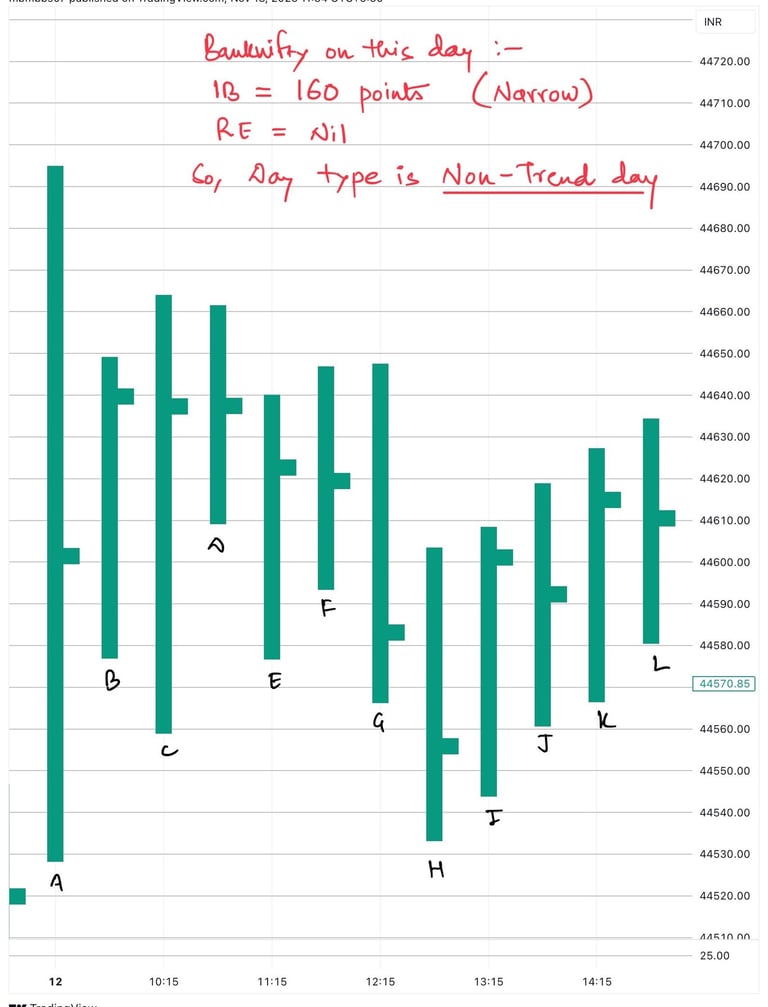

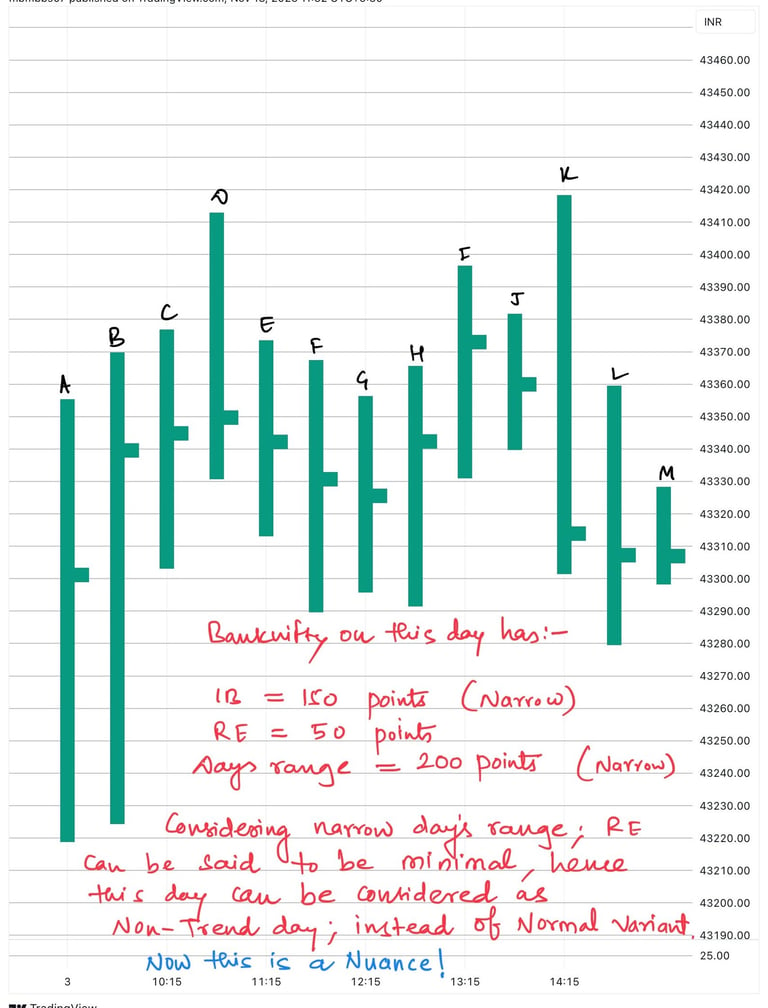

Non-Trend (NT) or Non-Conviction day:
Overall day’s range is narrow, so is the narrow IB ; and the RE is absent or minimal. On this day OTP volume is poor, which means they are under-committed due to lack of conviction. It usually occurs prior to some important news event, where traders waits for the new information.
Normal day:
It has wide IB or base, which don’t get upset throughout the day. There is no or minimal RE. Such profile occurs when some news announcement occur overnight or early in a day, which generates immediate reaction.
Normal Variant day (NV):
It has IB or base which is less wide than Normal day, but more than non-trend day; so that there is a scope for RE. However, RE don’t exceed IB; & the OTP volume is directly proportional to the magnitude of RE.


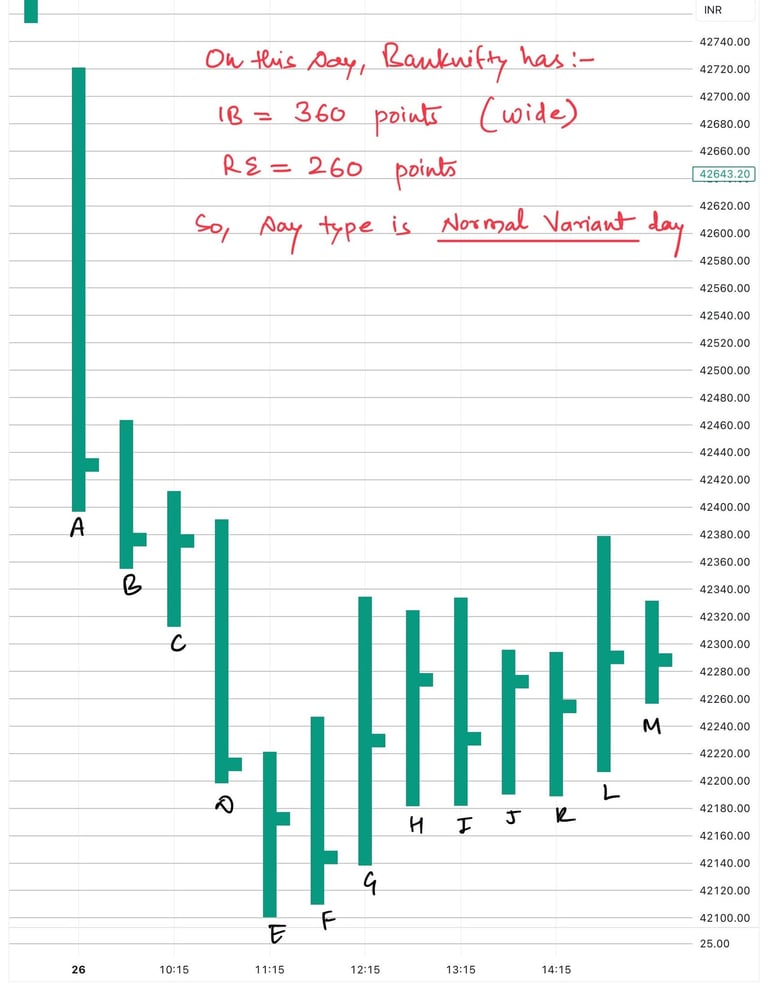

Double-Distribution Trend day (DD):
Market shows less conviction soon after opening, thus forming narrow IB or base, similar to Non-trend day. However, later in the day OTPs aggressively enters & disturbs the base leading to abrupt, rapid & large RE; which leads to two structural aspects in the chart profile which are specific to DD day, i.e., single prints excess & late distribution (That's why its called DD day for its early & late distributions). Thus late but aggressive OTP entry is the key feature here. Though it is a subtype of Trend Day, unlike standard trend day, it lacks sustained 1-TF mode. Hence, overall conviction on such day is lower than standard trend day. On such a day, Hold of the double distribution means, single print excess between two distributions isn’t taken out throughout the day; & it may act as a key reference point for next trading sessions.
Standard Trend day (or simply Trend day):
It has strong directional conviction almost throughout the day which causes multi-periodic, unidirectional & sustained RE, which must be more than IB. Such a day type has strong OTP conviction or volume. Now imagine someone taking position against the direction of trend day, it will be a fatal mistake!
IB on such day may be same as NVD, however there is 1-TF mode almost entire day. It differs from a NVD in that the Trend day’s Profile is generally thinner and more elongated, usually no more than four or five TPOs wide at any point. Such a day type may form multi-distribution chart profile.
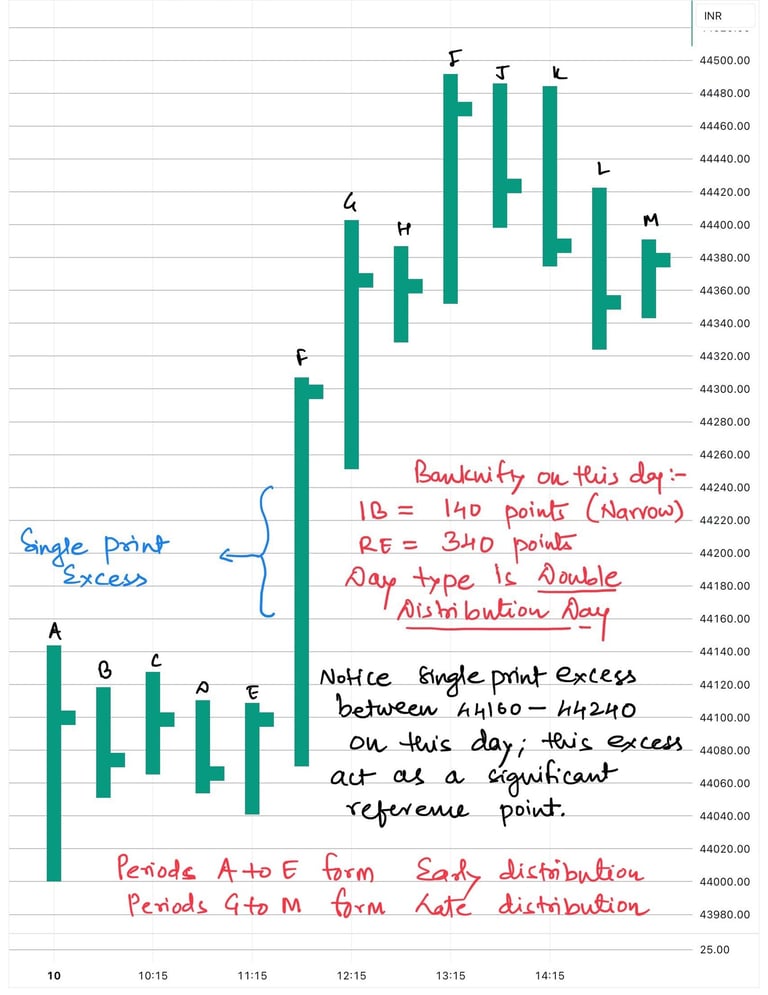

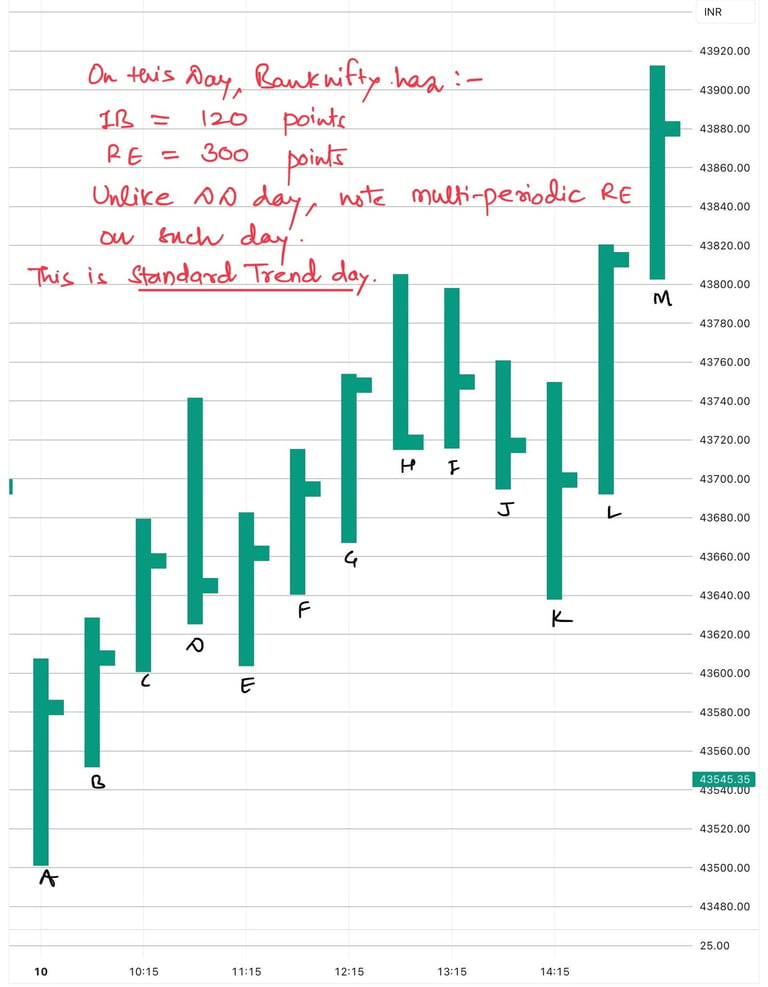

Neutral day:
On such a day, the IB or base is somewhere between a Trend and Normal day. It is not so small as to be easily upset and not wide enough to hold the day’s early extremes (i.e., A & B periods extremes). This is most volatile day which suggest state of confusion for both OTP- Buyers & Sellers; so, both show their dominance in RE, but at different times.
Based on the day's close; there are two types of Neutral days: Neutral-center day and Neutral-extreme day. On a Neutral-center day, the day closes with price in the middle of the range i.e., around Hf, indicating a lack of confidence and a balance between the OTP- buyer and seller. On a Neutral-extreme day, price closes near either the high or low extreme for the day, indicating either OTP- Buyer or Seller has taken control over day’s closing period.


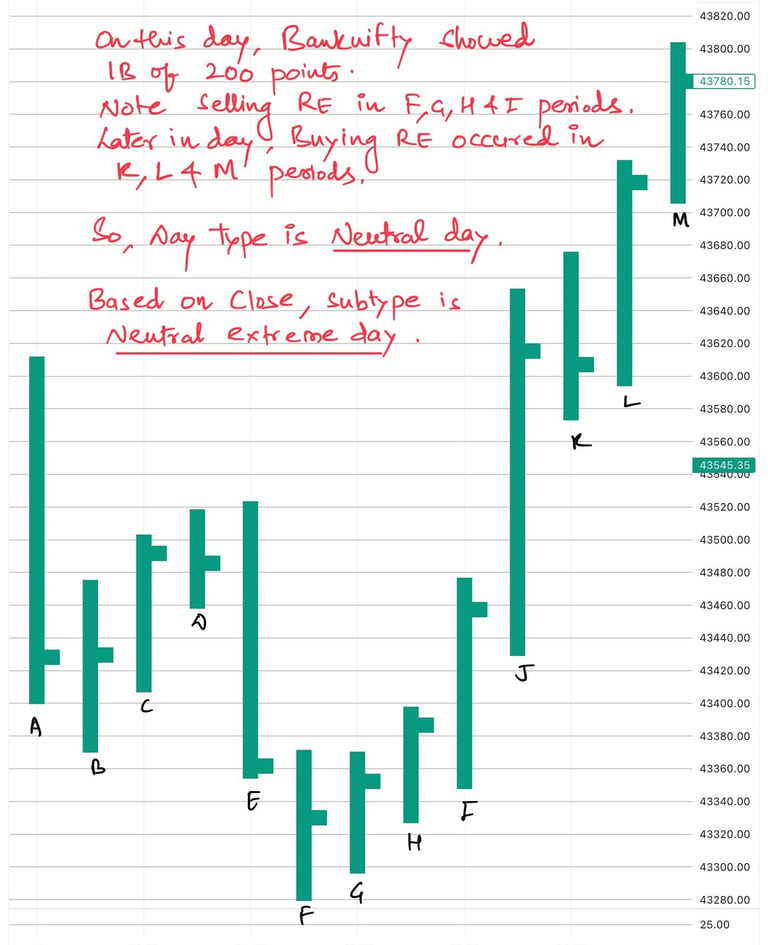

There are several variants of different day types, such as- failed RE day is a variant of Neutral day; & Late spike day occurs when price shows sudden sharp move away from day's VA late in a day. Another variant of trend day is multi-distribution day. These will be covered as nuances or as part of continued learning.
